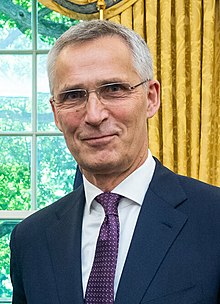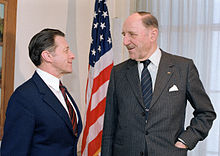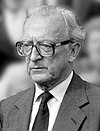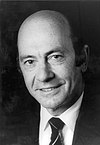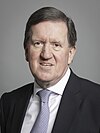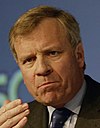
The North Atlantic Treaty Organization, also called the North Atlantic Alliance, is an intergovernmental military alliance of 32 member states—30 European and 2 North American. Established in the aftermath of World War II, the organization implements the North Atlantic Treaty, signed in Washington, D.C., on 4 April 1949. NATO is a collective security system: its independent member states agree to defend each other against attacks by third parties. During the Cold War, NATO operated as a check on the threat posed by the Soviet Union. The alliance remained in place after the dissolution of the Soviet Union and the Warsaw Pact, and has been involved in military operations in the Balkans, the Middle East, South Asia and Africa. The organization's motto is animus in consulendo liber. The organization's strategic concepts include deterrence.
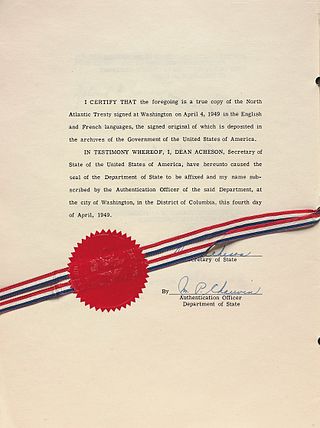
The North Atlantic Treaty is the treaty that forms the legal basis of, and is implemented by, the North Atlantic Treaty Organization (NATO). The treaty was signed in Washington, D.C., on 4 April 1949.
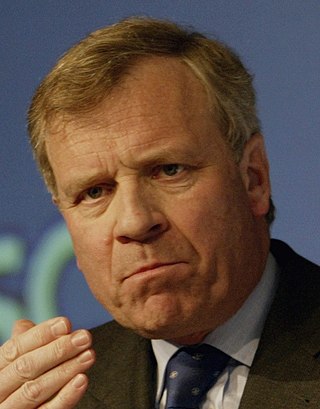
Jakob Gijsbert "Jaap" de Hoop Scheffer is a Dutch retired politician, jurist and diplomat who served as the eleventh Secretary General of NATO from January 2004 to August 2009. A member of the Christian Democratic Appeal (CDA), which he led from March 1997 to October 2001, he served as Minister of Foreign Affairs from July 2002 until December 2003 under Prime Minister Jan Peter Balkenende.

Hastings Lionel Ismay, 1st Baron Ismay was a British politician, diplomat and general in the British Indian Army who was the first Secretary General of NATO. He also was Winston Churchill's chief military assistant during the Second World War.

Edmund Peter Giambastiani Jr. is a retired United States Navy admiral who served as the seventh vice chairman of the Joint Chiefs of Staff from 2005 to 2007. He retired in 2007, after 37 years of service.

The Supreme Allied Commander Europe (SACEUR) is the commander of the North Atlantic Treaty Organization's (NATO) Allied Command Operations (ACO) and head of ACO's headquarters, Supreme Headquarters Allied Powers Europe (SHAPE). The commander is based at SHAPE in Casteau, Belgium. Effectively SACEUR is the second-highest military position within NATO, below only the Chair of the NATO Military Committee in terms of precedence. There is another Supreme Allied Commander in NATO, Supreme Allied Commander Transformation (SACT), titularly equal, but their duties are less important. SACT, in Norfolk, Virginia, has responsibility for capability development, rather than operations.
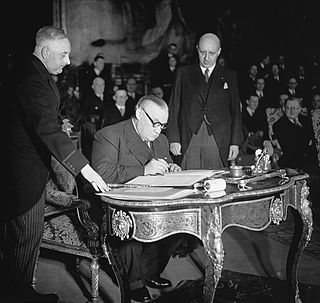
The Treaty of Brussels, also referred to as the Brussels Pact, was the founding treaty of the Western Union (WU) between 1948 and 1954, when it was amended as the Modified Brussels Treaty (MTB) and served as the founding treaty of the Western European Union (WEU) until its termination in 2010. The treaty provided for the organisation of military, economic, social and cultural cooperation among member states as well as a mutual defence clause.
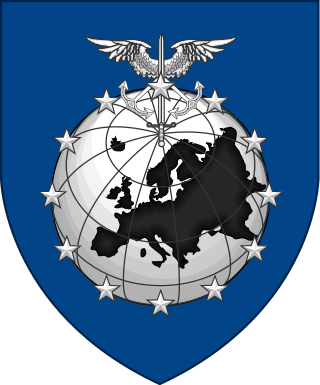
The Military Committee of the European Union (EUMC) is the body of the European Union's (EU) Common Security and Defence Policy that is composed of member states' Chiefs of Defence (CHOD). These national CHODs are regularly represented in the EUMC in Brussels by their permanent Military Representatives (MilRep), who often are two- or three-star flag officers.

The Chair of the NATO Military Committee (CMC) is the head of the NATO Military Committee, which advises the North Atlantic Council (NAC) on military policy and strategy. The CMC is the senior military spokesperson of the 32-nation alliance and principal advisor to the Secretary General. The chair is one of the foremost officials of NATO, next to the Secretary General and the Supreme Allied Commander Europe. The CMC is assisted by the deputy chair, who advises the Deputy Secretary General and serves as the principal agent for coordination of nuclear, biological, and chemical matters for the Military Committee. Originally titled the Chairman, the post was redesignated in 2021 to reflect the gender-neutrality of the post.
The Structure of the North Atlantic Treaty Organization is complex and multi-faceted. The decision-making body is the North Atlantic Council (NAC), and the member state representatives also sit on the Defence Policy and Planning Committee (DPPC) and the Nuclear Planning Group (NPG). Below that the Secretary General of NATO directs the civilian International Staff, that is divided into administrative divisions, offices and other organizations. Also responsible to the NAC, DPPC, and NPG are a host of committees that supervise the various NATO logistics and standardisation agencies.

Charles Merville Spofford CBE was an American lawyer who held posts in NATO and on the boards of numerous arts organizations.

From April 1948, the member states of the Western Union (WU), decided to create a military agency under the name of the Western Union Defence Organisation (WUDO). WUDO was formally established on September 27–28, 1948.

The NATO headquarters is the political and administrative center of the North Atlantic Treaty Organization (NATO). After previous locations in London and Paris, it has been headquartered in Brussels since 1967, in a complex in Haren, part of the City of Brussels, along the Boulevard Léopold III/Leopold III-laan.

The Committee of Chiefs of Military Medical Services in NATO (COMEDS) is the North Atlantic Alliance's senior medical body, reporting to the NATO Military Committee. It is headed by a chairman, is composed of the Surgeons General of the allied nations and the senior medical advisers within NATO's command structure, and meets twice annually in plenary session. Supported by NATO's integral medical staff and numerous specialized multi-national working groups and panels, COMEDS acts as the central point for the development and coordination of common standards and for providing medical advice to the Military Committee.

Robert Peter Bauer is a lieutenant-admiral in the Royal Netherlands Navy, currently serving as the Chair of the NATO Military Committee since June 2021, after succeeding Air Chief Marshal Sir Stuart Peach. Bauer previously served as the Chief of Defence from October 2017 to April 2021, and as the Vice Chief of Defence of the Armed forces of the Netherlands from 1 September 2015 to 13 July 2017. Bauer was also involved in anti-terrorist and anti-piracy operations in the Mediterranean Sea, and in the Horn of Africa.

The relationship between Azerbaijan and NATO started in 1992 when Azerbaijan joined the newly created North Atlantic Cooperation Council. Considerable partnership between NATO and Azerbaijan dates back to 1994, when the latter joined Partnership for Peace program. Azerbaijan established a diplomatic Mission to NATO in 1997 by the Presidential Decree on 21 November.

The Deputy Chair of the NATO Military Committee (DCMC) is the deputy head of the NATO Military Committee. Originally titled as the Deputy Chairman, the post was redesignated in 2021 to reflect the gender-neutrality of the post.
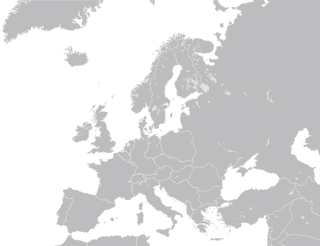
The history of the North Atlantic Treaty Organization (NATO) begins in the immediate aftermath of World War II when British diplomacy set the stage to contain the Soviet Union and to stop the expansion of Soviet power in Europe. The United Kingdom and France signed, in 1947, the Treaty of Dunkirk, a defensive pact, which was expanded in 1948 with the Treaty of Brussels to add the three Benelux countries and committed them to collective defense against an armed attack for fifty years. The British worked with Washington to expand the alliance into NATO in 1949, adding the United States and Canada as well as Italy, Portugal, Norway, Denmark, and Iceland. Greece and Turkey joined in 1952, West Germany joined in 1955, Spain joined in 1982, Czech Republic, Hungary and Poland joined in 1999, Bulgaria, Estonia, Latvia, Lithuania, Romania, Slovakia, and Slovenia joined in 2004, Albania and Croatia joined in 2009, Montenegro joined in 2017, North Macedonia joined in 2020, Finland joined in 2023, and Sweden joined in 2024.

The European Union (EU) and the North Atlantic Treaty Organisation (NATO) are two main treaty-based Western organisations for cooperation between member states, both headquartered in Brussels, Belgium. Their natures are different and they operate in different spheres: NATO is a purely intergovernmental organisation functioning as a military alliance, which serves to implement article 5 of the North Atlantic Treaty on collective territorial defence. The EU on the other hand is a partly supranational and partly intergovernmental sui generis entity akin to a confederation that entails wider economic and political integration. Unlike NATO, the EU pursues a foreign policy in its own right—based on consensus, and member states have equipped it with tools in the field of defence and crisis management; the Common Security and Defence Policy (CSDP) structure.

Armenia and the North Atlantic Treaty Organization (NATO) have maintained a formal relationship since 1992, when Armenia joined the North Atlantic Cooperation Council. Armenia officially established bilateral relations with NATO in 1994 when it became a member of NATO's Partnership for Peace (PfP) programme. In 2002, Armenia became an Associate Member of the NATO Parliamentary Assembly.


